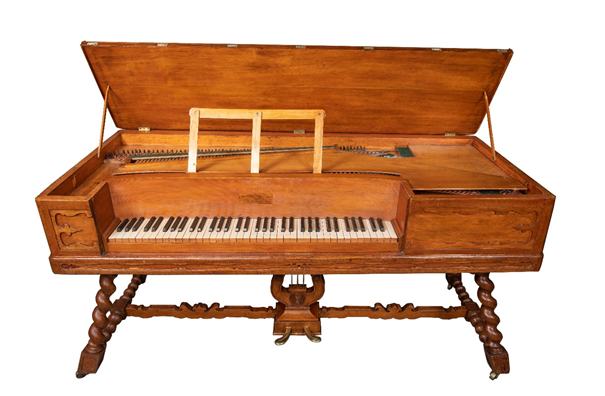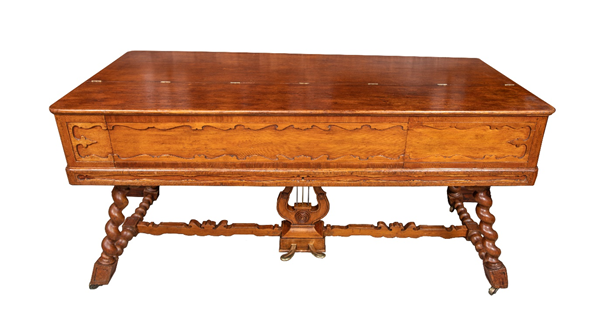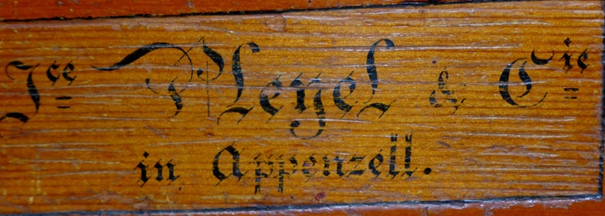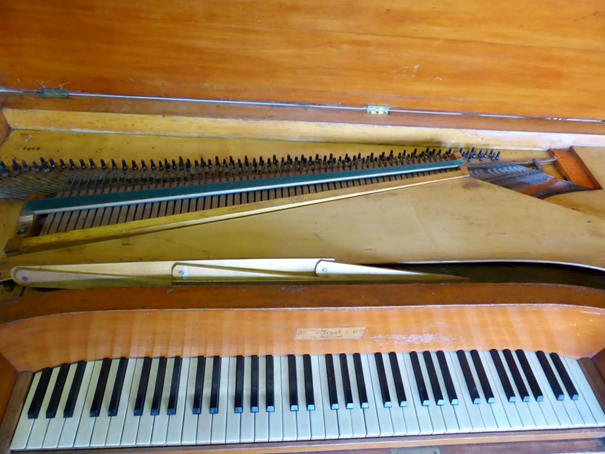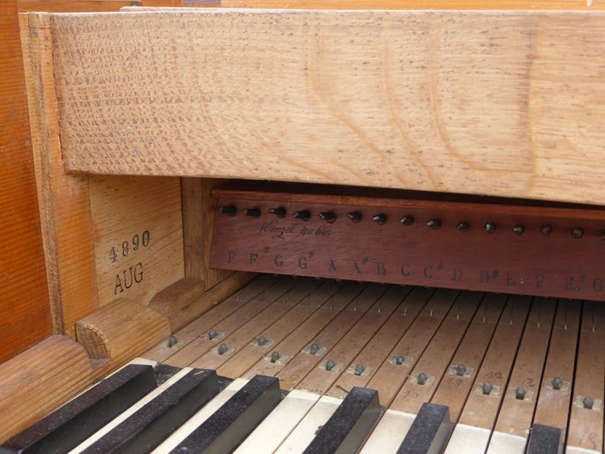PIANO-FORTE
Camille PLEYEL 1788-1855
Specially made for James de Rothschild entre 1835et 1836.
Serial number: 4890.
Astonishing signature on the name-board:
“PLEYEL & Cie / in APPENZELL”.
The furniture, spruce veneered, is shaped like a Swiss table called money-changer table or banker-table.
Two strings a note. Six octaves keyboard: F-f6.
Dimensions: 171,5cm x 73,3cm.
This instrument is registered in the archives of the Pleyel company. Firstly in the workshop register, about starting of production (may 1835) and its different steps, secondly in the sale book, about the description and specification of this model and the name of the client. One can read: n°4890: Square / spruce outlined / 2/2/6/ (that means: 2 strings a note / 2 pedals / 6 octaves) ordered and sold to as a classical square mahogany model.)
The same year, another piano Pleyel is delivered to the Rothschild mansion of the rue Lafitte. A pianino model of Renaissance style, ebony veneered with a mother of pearl keyboard, serial number 4798. It is played by Charlotte (1825-1899) the eldest daughter of James de Rothschild. She is eleven years when the piano is delivered. Very good pianist, she will be teached by Frederic Chopin himself. He will dedicate to her his Ballade n°4, opus 52.
James de Rothschild (1792-1899) was a great art connoisseur. Delacroix, Balzac, Berlioz, Rossini or Chopin were entertained to the famous receptions of the rue Laffite. The renaissance style of the house can explain the choice of the Pleyel pianino n°4798, but what about a
square model, spruce veneered and willfully rustic? The choice of a “banker table” model, typical of the Switzerland looks rather interesting and funny from a banker, but the signature “Pleyel in Appenzell”, really authentic, remains at the present degree of research, a mystery… (Bibliography: Jean Lude: “Pleyel. La passion d’un siècle”. 2008.)
One cannot consider the signature “Pleyel in Appenzell” without referring to the “Ranz des vaches d’Appenzell” melody by Giacomo Meyerbeer, a great friend of James de Rothschild.
Appenzell symbolized under its name the romantic culture in its most stripped of artifices and the most moral aspect. Popular mountain music is one of the most popular illustrations of this at the time.
Already Jean-Jacques Rousseau mentions the “Ranz des vaches” in his Dictionary of Music. (p.443)
Giovani Battista Viotti transcribed a version of it in 1792. We find the Ranz des vaches in the opening of Guillaume Tell by G. Rossini. A version is also played in the Scène aux champs, in the third movement of Berlioz’s Symphonie Fantastique. Marie-Joseph Chénier had composed the libretto of a Ranz des vaches in “the triumph of the Republic” by Gossec. Franz Liszt had paraphrased it in “The Album of a Traveller” and Chopin was inspired by it at the request of the Marquis de Custine…
This piano does not appear in the Rothschild collections as they will be inventoried later. It seems that James de Rothschild offered it himself to Giacomo Meyerbeer, to whom he was very close…
The search continues…
